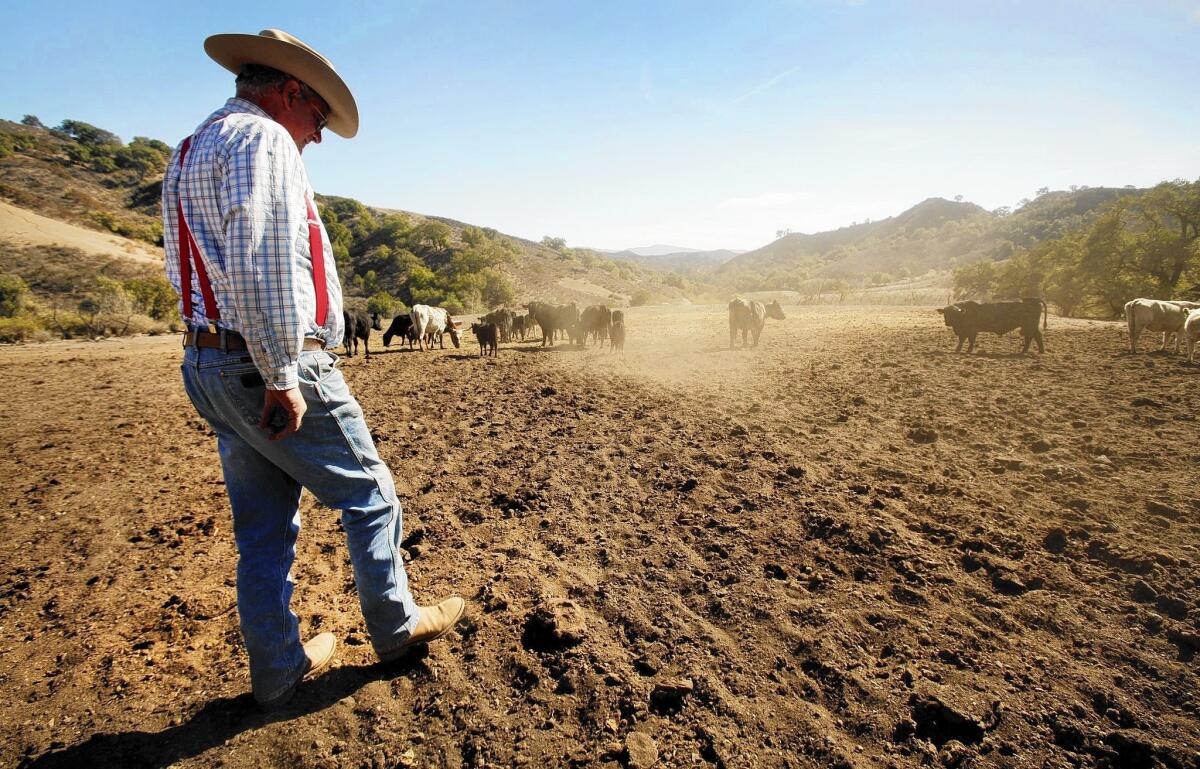Climate change is already affecting all of U.S., report says

- Share via
Reporting from Washington — Climate change is already being felt in every region of the United States, resulting in hotter summers, shorter winters, extreme precipitation, even worsening allergies that will change the way Americans live, according to a government report released Tuesday.
The National Climate Assessment, mandated by Congress and published every four years to guide policymakers, offers sobering details of climate change’s immediate effects.
“The overall message is that climate change is happening right now — we can’t think of this as an issue for future generations,” said Radley Horton, one of the lead authors and a climate scientist at the Earth Institute’s Center for Climate Systems Research at Columbia University. “We know that the effects on ecosystems, infrastructure, economics and public health are going to grow.”
The report sketches out grim scenarios for different regions. The Northeast and Midwest, for instance, would see many more heavy downpours that could lead to flooding and erosion. The Southwest, including California, would be more prone to extreme heat, drought and wildfire, while the Northwest could see a widespread tree die-off because of wildfire, insect outbreaks and disease.
“Evidence of climate change appears in every region and impacts are visible in every state,” the report asserts, saying that a national infrastructure built to withstand “historical conditions” already is being overwhelmed by prolonged rains, rapid snowmelt and extreme heat.
The assessment tackles head-on humanity’s contribution to climate change, the thorniest question tied to the issue and the heart of the debate that has deadlocked efforts to cut greenhouse gas emissions. A variety of evidence confirms human activities have driven global warming over the last 50 years, the report concludes, citing specifically the emissions of heat-trapping gases from the burning of coal, oil and natural gas.
Arguments often used to deny that man-made climate change is occurring are dismissed in decisive language. The idea that warming temperatures have been caused by greater solar activity or volcanic eruptions, for example, is not supported by satellite data, the report states. A recent pause in the rise of global average land temperatures “appears to be related to cyclic changes in the oceans and in the sun’s energy output,” it says.
The report’s message tracks closely with the Obama administration’s vow to push climate change near the top of the president’s agenda, after being criticized by supporters for neglecting it in his first term.
The White House has worked over the last five years to curb greenhouse gas emissions from vehicles and, more recently, power plants. But in the last few months, the administration has gone a step further, launching initiatives meant to make preparing for climate change a backyard issue for Americans.
“We want to emphasize to the public, this is not some distant problem of the future. This is a problem that is affecting Americans right now, whether it means increased flooding, greater vulnerability to drought, more severe wildfires,” President Obama said in a Rose Garden interview with Al Roker, weatherman for NBC’s “Today” show, one of a number of local and national TV weather forecasters invited for the report’s unveiling.
Surveys show that most Americans trust their television weather guides as reliable sources on climate change.
The report, written by more than 240 scientists, businesspeople and other experts, uses existing data to make the case that climate change is a fact whose effects will widen. It says the U.S. annual mean temperature since the late 19th century has risen by 1.3 to 1.9 degrees Fahrenheit, depending on the study, with most of the increase occurring since 1970. “Temperatures are projected to rise another 2 degrees to 4 degrees [Fahrenheit] in most areas” of the country over the next few decades, according to the report.
If the U.S. and other big polluters cut emissions considerably, U.S. temperatures would rise about 3 degrees to 5 degrees by the end of the century. Under today’s “business-as-usual scenario,” U.S. average temperatures would rise by 5 degrees to 10 degrees, which means that summers in New Hampshire by the end of the century would be as hot as those in North Carolina now. “Extreme heat is becoming more common, while extreme cold is becoming less common,” the report says.
Most Americans believe that climate change is happening or will happen in their lifetimes, according to a Gallup poll in March. But only 1 in 3 sees it as a “serious threat” to their way of life, the poll reported.
Administration officials said they hoped the detail in the report would convince skeptics. But Sen. James M. Inhofe (R-Okla.), one of the most outspoken, dismissed its conclusions. “With this report, the president is attempting to once again distract Americans from his unchecked regulatory agenda that is costing our nation millions of job opportunities and our ability to be energy independent,” Inhofe said.
The White House, which has named special advisor John Podesta to spearhead its climate efforts, has embraced the movement to build “resilience” to the effects of higher temperatures.
In February, the administration created so-called climate hubs under the Agriculture Department to connect farmers and ranchers with experts who could help them prepare for wildfires, pests, flooding and drought. The president asked Congress for $1 billion in his 2015 budget to establish a “climate resiliency fund” that would finance research, preparation and infrastructure to adapt to extreme weather driven by global warming.
Such efforts help the White House connect to Americans who might be seen as strange bedfellows for a Democratic president, such as rural farmers and insurance executives. Advocates for legislative action to combat climate change hope that, over time, those connections will build a coalition.
“I think you are going to see the polls change, including greater support for the president’s climate action plan, for reductions in emissions,” said John Holdren, director of the White House Office of Science and Technology Policy. Climate change “still ranks low in terms of salience in the polls, but I think there will be a change in that salience and what people communicate to their representatives in Congress.”
For now, the White House has little hope for moving climate legislation through the divided Congress. On Tuesday, the Senate, which is controlled by Democrats, brought an energy-efficiency bill backed by many businesses to the floor for debate. But its chances appear uncertain in the GOP-led House, where nearly all Republicans dispute that climate change is man-made.
The White House has instead focused on taking executive action and working directly with businesses and others. Officials say the president will announce a series of alternative-energy pledges this week when he talks about energy in San Jose.
Obama this year directed the Environmental Protection Agency and the Transportation Department to develop a new generation of tougher fuel economy standards for heavy-duty, long-haul trucks. The draft rules are due by March 2015 and the final version a year later. The administration is to release new regulations to cut carbon emissions from existing power plants in early June.
More to Read
Sign up for Essential California
The most important California stories and recommendations in your inbox every morning.
You may occasionally receive promotional content from the Los Angeles Times.












